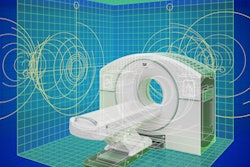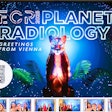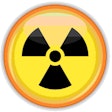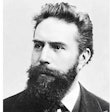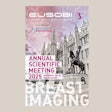
Hybrid imaging practice is notably heterogeneous, training programs and qualification options are limited, and integrated, interdisciplinary PET/CT reporting is not implemented ubiquitously, a large European survey has found.
 Dr. Sergios Gatidis from Tübingen.
Dr. Sergios Gatidis from Tübingen.In an article published online on 21 May in Insights into Imaging, the authors from the European Society for Hybrid, Molecular and Translational Imaging (ESHIMT) call for further harmonization of operation and training in hybrid imaging on a European, regional, and institutional level to ensure high clinical quality and to strengthen the clinical role of hybrid imaging.
"The recent surveys among imaging professionals in Europe attest to a persistent heterogeneity in performing hybrid imaging examinations, in particular in regard to workflows, reporting, and training," wrote the researchers led by Dr. Sergios Gatidis from the department of radiology at University Hospital Tübingen in Germany. "This heterogeneity exists despite repeated past cross-specialty statements that further integration of training procedures is required to make optimum use of hybrid imaging systems and, most importantly, for the benefit of the patients."
Going hybrid
Since the introduction of PET/CT just before the turn of the millennium, hybrid imaging technologies have flourished in a multitude of settings, and while combining structural and anatomical information has advanced patient care, the situation also "comes with a high degree of complexity with respect to both technical and clinical aspects," they noted. "Furthermore, combining any two imaging modalities does not only affect engineers but imaging professionals alike. While the technical aspects of hybrid imaging have been resolved to a high degree, its operating procedures are still under debate."
In particular, questions remain as to whether a nuclear medicine expert, a radiologist, both specialists, or a person with dual training is best qualified to handle hybrid imaging scans, the interpretation of results, and the final report. To help answer those questions, the researchers sought to determine the current state of how hybrid imaging is performed across Europe, based in part on scan volume, the specialists involved, and the mechanics of final reports reaching the appropriate destinations.
They distributed two surveys in 2017 to gauge the state of hybrid imaging on the continent. The first survey, known as the local survey, was emailed in September 2017 to the heads of departments of radiology or nuclear medicine. The poll consisted of 15 questions, including the following:
- What hybrid imaging procedures are performed at your hospital?
- Where is the hybrid imaging facility located in your institute?
- Who is responsible for the organization of your hybrid imaging facility (e.g., for the definition of imaging protocols)?
- Who operates hybrid imaging scanners at your hospital?
The authors received 61 responses (5%) from 26 countries to the local survey. The poll revealed that PET/CT (87%) and SPECT/CT (84%) were the most available hybrid imaging modalities. Approximately half of the respondents (51%) perform more than 2,000 PET/CT scans per year, whereas 28% conduct fewer than 1,000 PET/CT exams per year.
In addition, most of the sites (59%) operate their hybrid imaging systems within nuclear medicine departments. The researchers cited "historical reasons" for this placement, adding that it "can also be explained in part by the necessary measures for radiation protection." In 57% of cases, nuclear medicine technologists perform the hybrid imaging examinations, while in 23%, technologists from nuclear medicine and radiology together operate the systems.
As for the final report, a radiologist and nuclear medicine physician write a joint report at 51% of the sites, while a dual-certified imaging expert handles the report at 20% and a nuclear medicine physician is the sole author at another 20%. The latter finding, the researchers surmised, "may be biased considering that we received responses mainly from university hospitals that may tend towards higher integration of PET/CT reporting."
National survey results
The second survey, dubbed the national survey, was sent via email in March 2017 to the ministries of health of 37 countries in the Standing Committee of European Doctors (CPME). It dealt with the status of combined training options for radiology and nuclear medicine, and there were 10 questions, including the following:
- What are the required months of training to obtain a license in radiology?
- How many months of nuclear medicine training can be part of training in radiology?
- What are the required months of training to obtain a license in nuclear medicine?
- How many months of radiology training can be part of training in nuclear medicine?
- Is it possible to obtain both national licenses?
The researchers collected 34 responses (92%). Most countries offered 60 months of specialty training in radiology (range, 48 months in five countries to 72 months in one country), with nuclear medicine training varying from 12 months to 60 months. When incorporated with radiology, nuclear medicine training ranged from one to 27 months, with a median of three months.
Dual certification in radiology and nuclear medicine is obtainable in 21 countries (62%) that participated in the national survey. In comparison, only 41% of respondents in the local survey reported that they offer a joint nuclear medicine-radiology training program.
So, what are we to conclude from the survey responses? Gatidis and colleagues wrote that the results of the surveys attest to the existing diversity among nuclear medicine physicians and radiologists in handling hybrid examinations. To make more efficient and potentially more accurate use of hybrid imaging modalities, a "close and trusting cooperation between radiology and nuclear medicine and further harmonization are necessary on a European, regional, and institutional level," they added. "Also, a quality centric discussion about the necessary qualifications for reporting hybrid imaging studies should be initiated."
All of this was originally laid out in the white paper on multimodality imaging published jointly by the European Association of Nuclear Medicine (EANM) and European Society of Radiology (ESR) in 2007, and a decade later "we are still far away from these noble goals for making hybrid imaging grow stronger," Thomas Beyer, PhD, MBA, co-author and president of ESHIMT, told AuntMinnieEurope.com.





